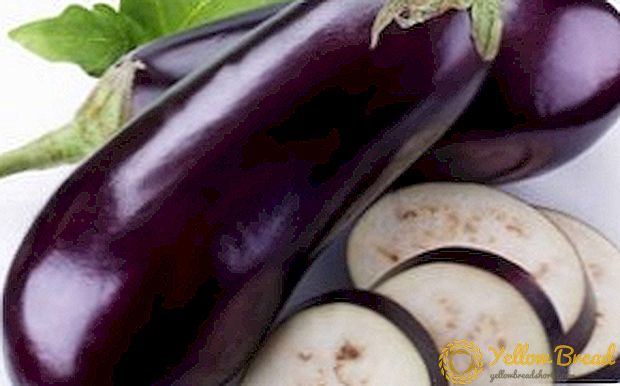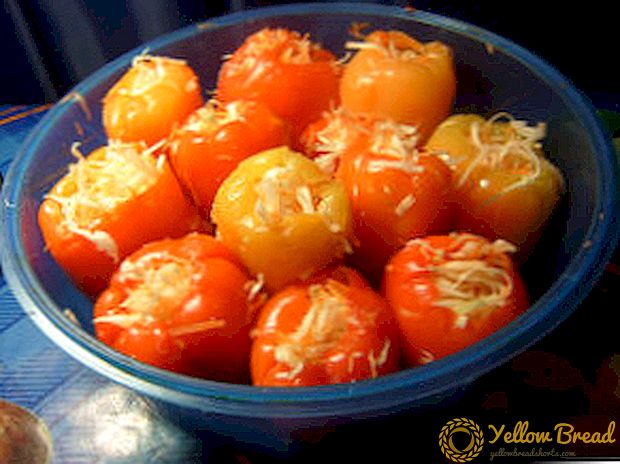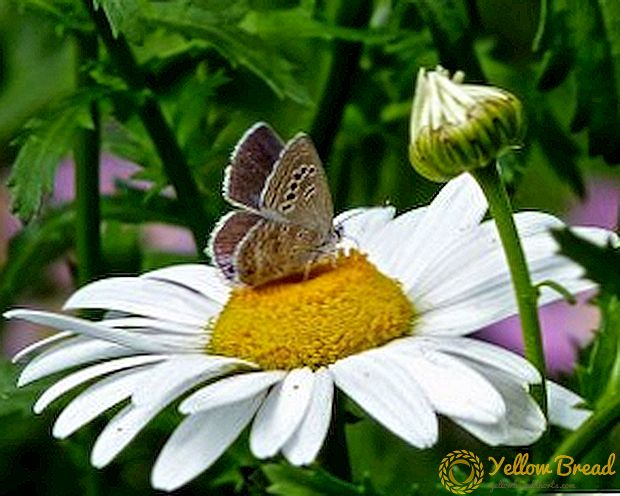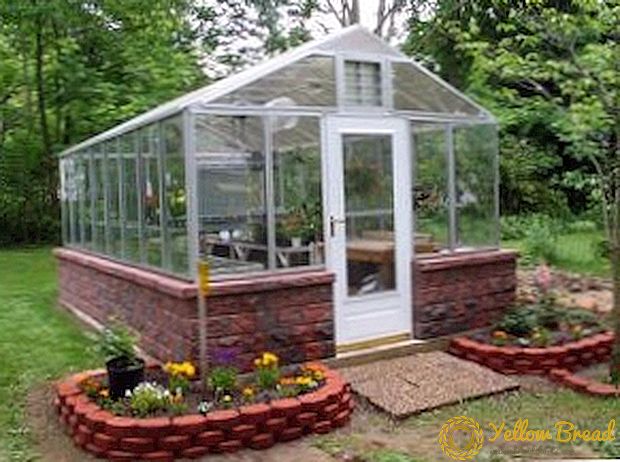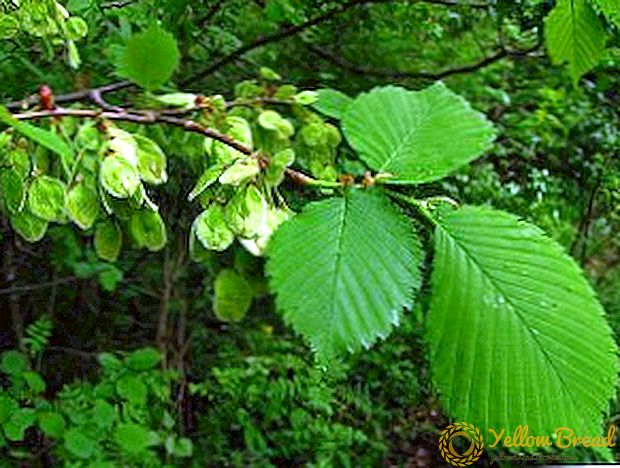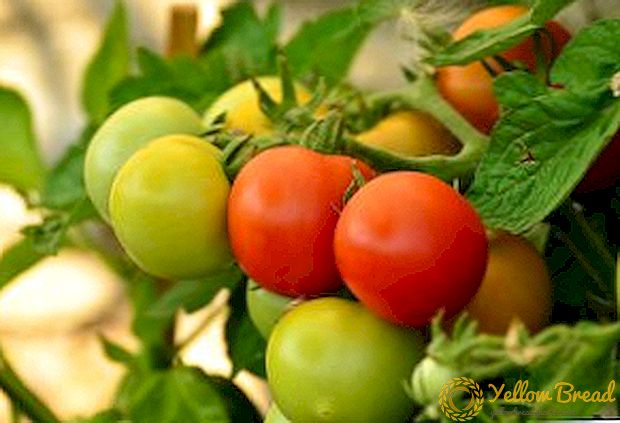 Among all the varieties of tomatoes on the market today, gardeners are trying to choose those that are unpretentious when grown in the open field, do not require garter and pasynkovaniya. All these advantages have variety of tomato Oak.
Among all the varieties of tomatoes on the market today, gardeners are trying to choose those that are unpretentious when grown in the open field, do not require garter and pasynkovaniya. All these advantages have variety of tomato Oak.
- Tomato Dubrava: variety description
- Advantages and disadvantages of tomato Dubok (Dubrava)
- How to grow seedlings, planting Dubrava
- Soil requirements
- The timing of planting seeds
- Seed preparation and planting scheme for tomato varieties Dubrava
- How to care for seedlings
- How to plant tomatoes in open ground
- When can be planted seedlings varieties Dubrava (Oak) in the open ground
- Process technology
- How to care for Dubok (Dubrava) variety tomatoes
- Watering and feeding
- Masking a plant
- Soil care (weed removal and mulching)
- Tomato Dubrava: Harvesting
Tomato Dubrava: variety description
 This type of tomato has a limited stem height - it does not grow more than 70 cm in height. At the same time, it has relatively few branches, but the foliage densely and densely covers the entire bush.
This type of tomato has a limited stem height - it does not grow more than 70 cm in height. At the same time, it has relatively few branches, but the foliage densely and densely covers the entire bush.
The fruit of the plant grows average, reaching up to 110 g, although gardeners claim that in greenhouse conditions they can grow more.Bright red in appearance, they have dense fleshy walls and very few seeds. Therefore, they are equally in demand both for fresh consumption and for processing.
Tomatoes Oak have the following description: a rounded, slightly oval, evenly shaped, have subtle ribbing, slightly flattened at the sides.
The variety is valued for its early ripening and high yield. In this case, care for him needs a minimum. The plant is resistant to viral diseases, frost. Compact bush can be grown even on the windowsill of the house.
It is known that most varieties of tomato are very demanding on the level of humidity. Small deviations from ideal conditions can have sad consequences, but not in this case.
Tomato Dubok grows well in both the northern and southern regions, obtaining excellent characteristics. The only time is that during the period of flowering and pollination he needs to ensure a temperature not higher than 25 ° C.
Advantages and disadvantages of tomato Dubok (Dubrava)
The most important advantage of this variety is extreme ease of care and high yield. It is enough to weed the plant twice, as its overgrown bush begins to drown out the weeds, saving the gardener from further cultivating the soil.
 Tomatoes of the variety Dubrava ripen a maximum on the 110th day after the germination of the seed, which makes it possible to attribute the variety to the early ripening. The plant can withstand sudden changes in temperature, cooling. It is resistant to the most common diseases, especially against late blight.
Tomatoes of the variety Dubrava ripen a maximum on the 110th day after the germination of the seed, which makes it possible to attribute the variety to the early ripening. The plant can withstand sudden changes in temperature, cooling. It is resistant to the most common diseases, especially against late blight.
You can grow it without a special garter and pasynkovaniya. At the same time, it demonstrates high yield - up to 5 kg of crop can be harvested per square meter.
Of the disadvantages are called too large fruit sizes that are inconvenient for canning. They can not be cut, but in the neck banks do not prolazyat.
How to grow seedlings, planting Dubrava
As in the case of other varieties, sowing seeds in open ground will not be suitable for plant cultivation. Oak tomatoes require the cultivation of seedlings, which are then planted in the ground in the open air.
Soil requirements
For planting tomato seeds of this variety, you can use a special mixture purchased in the store. But you can use the available substrates that are left from the cultivation of parsley, dill, zucchini.
Whatever your choice, It is advisable to sanitize or ignite the earth before planting in order to disinfect it.
The timing of planting seeds
 As a general rule, seeds for seedlings are sown in the last decade of March. But still it is worth considering the particular climate of your band: in warmer regions you can sow them earlier, and in cooler regions later.
As a general rule, seeds for seedlings are sown in the last decade of March. But still it is worth considering the particular climate of your band: in warmer regions you can sow them earlier, and in cooler regions later.
Seeds are sown in soil, placed in plastic containers. Make sure that each of them has a hole at the bottom, which will provide good drainage when watering future sprouts.
Seed preparation and planting scheme for tomato varieties Dubrava
Before planting the seeds must be prepared. If desired, you can process the growth stimulator, but it is imperative to soak them in a 2% solution of potassium permanganate. After sowing, they sprout almost everything.
How to care for seedlings
Young shoots are first sprayed and not watered in order not to damage them.When the seedlings reach two months of age, you can start tempering for the preparation of landing in open ground. To do this, she is satisfied with the daytime temperature at 17-18 ° C, and at night - 12-13 ° C.
 When the shoots will form 3-5 leaves, you can swoop down in separate cassettes or containers. Then it is recommended to fertilize them with special means for seedlings, for example, Agricola. Periodic use of growth stimulants - humic fertilizers is acceptable.
When the shoots will form 3-5 leaves, you can swoop down in separate cassettes or containers. Then it is recommended to fertilize them with special means for seedlings, for example, Agricola. Periodic use of growth stimulants - humic fertilizers is acceptable.How to plant tomatoes in open ground
Tomato Dubrava does not require special planting and care, they should be about the same as for other varieties of tomatoes. The only thing that is not recommended is to plant very thickly - no more than six bushes per square meter. Otherwise, the bushes of the plant will oppress each other, making it difficult to grow and reducing yields.
The rest of the Dubrava just need to loosen, feed, weed and watered with warm water. A big plus is that the bushes do not have to be tied up; you also do not need to remove the side shoots. This greatly facilitates the care of him.
When can be planted seedlings varieties Dubrava (Oak) in the open ground
Planting sprouts in open ground is carried out when the last frosts have departed. In our period, this period falls around the end of April and the beginning of May. At the same time, the seedlings themselves must be at least 55 days old from germination.
Process technology
 For tomatoes of this variety, it is necessary to isolate the southern part of the vegetable garden, but on it they can grow for several years in succession, provided that the soil is fed with high-quality organic fertilizers. It is advisable that onions, cucumbers, cabbage, and zucchini be cultivated on this site before Dubrava.
For tomatoes of this variety, it is necessary to isolate the southern part of the vegetable garden, but on it they can grow for several years in succession, provided that the soil is fed with high-quality organic fertilizers. It is advisable that onions, cucumbers, cabbage, and zucchini be cultivated on this site before Dubrava.
How to care for Dubok (Dubrava) variety tomatoes
Tomato care is extremely simple. In addition, the plant rarely suffers from late blight. But you must follow some basic rules to get the expected yield.
Watering and feeding
Every day, there is no need to water the plant, but it is also impossible to allow complete drying of the earthen coma around the bush. Therefore, occasionally watering Dubrava is still shown. It is desirable to do this after sunset and plentifully.

Periodically it is also necessary to feed the plant. To do this, use a mixture consisting of wood ash (250 g), superphosphate (50 g), organic fertilizer (1: 5). In the soil it is made once in 20 days. By doing this regularly, you will significantly increase the yield of tomatoes.
Masking a plant
The peculiarity of the variety is that it does not require stading.However, experienced gardeners recommend yet to carry out this manipulation, forming a bush for two or three stems.
Soil care (weed removal and mulching)
Caring for a plant involves periodic weeding. True, you will have to do it carefully once or twice. Then the strong bush itself will drown the weeds.
 Regular loosening of the soil is recommended. This leads to the growth of the root system, increasing the growth of the bush itself and, accordingly, increasing its productivity.
Regular loosening of the soil is recommended. This leads to the growth of the root system, increasing the growth of the bush itself and, accordingly, increasing its productivity.
Tomato Dubrava: Harvesting
Shrubs give a friendly and bountiful harvest during July - August. If you follow all the rules of care for them, you can remove up to 7 kg of tomatoes from one square meter. The first fruits ripen on the 80-105th day after planting, and the latter can be removed even in late autumn. During this period, the fruits ripen gradually, and the harvest can be removed continuously.
Tomatoes of this variety have a pleasant acidity, fleshy, with a small amount of seeds. They are willingly used for salads, consumed raw. They are well transported and long remain marketable after removal. Also perfectly amenable to pickling, salting, freezing, drying.Contain 6% of dry matter, therefore concentrates are made from them.
 Tomato Dubrava has a number of positive characteristics, the most important of which are ease of care, high yield and preservation of shape and taste with long storage. Therefore, gardeners are increasingly giving him sunny southern beds on their plots, collecting abundant crops for several years in a row.
Tomato Dubrava has a number of positive characteristics, the most important of which are ease of care, high yield and preservation of shape and taste with long storage. Therefore, gardeners are increasingly giving him sunny southern beds on their plots, collecting abundant crops for several years in a row.

